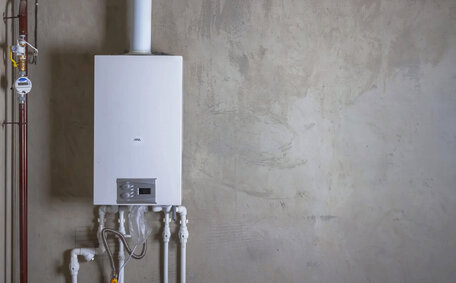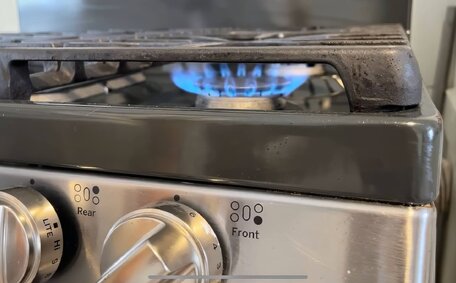Understanding What Causes Toilet Blockages
Blocked toilet issues can be inconvenient, messy, and potentially damaging if left untreated. By grasping the usual suspects within your drainage system, you can take decisive steps to prevent your toilet from troublesome blockages.
Excessive toilet paper use per flush often results in blockages due to the buildup it causes, leading to clogged toilets. Opt for less toilet paper needed for your bathroom needs and avoid flushing paper towels or napkins which don’t break down readily.
Non-Flushable Items
Items marketed as "flushable," such as baby wipes, often fail to degrade and can frequently clog pipes. They combine with fats and other debris to create common causes blocked toilets. Resist the urge to flush anything and everything except for human waste and toilet paper.
Foreign Objects
Items such as toys, jewellery, dental floss, Q-tips, and cosmetics can lodge in toilet traps and drains. Take care not to knock things into your toilet drain accidentally.
Faulty Plumbing
Issues like pipe cracks, off-kilter piping, crushed drains, and root intrusion allow debris and waste to accumulate more readily. A blocked through soil stack also inhibits adequate flushing power. Professional inspections can uncover concerns ensuring that your toilet keeps functioning optimally.
However, should a persistent or untreatable clog arise, get in touch with us today could prevent significant backups and damage rather than quick fixes.
Excessive Toilet Paper Usage
Using too much toilet paper can result in blockages, as even materials labelled as biodegradable can clog your pipes. Flushing large wads or piles of toilet paper can create buildups, a common cause for clogged toilets.
Thicker, low-porosity toilet paper varieties are harder to disintegrate, increasing the risk of blockages compared to standard 2-ply.
In numerous instances, you may need to plunge your toilet when blocked by excessive use of toilet paper, and employing the correct type of plunger can quickly alleviate the issue. However, without changing usage habits, excessive toilet paper will continue to cause toilet problems. Adopting more conservative toilet paper use per flush can resolve the common causes clogged toilets experience.
Flushing Non-Flushable Items
Flushing common bathroom and personal hygiene products can easily result in clogs and blockages. These include:
- Baby wipes
- Disinfecting wipes
- Paper towels
- Napkins and tissues
- Dental floss
- Cotton balls and swabs
- Condoms
- Tampons and sanitary pads
- Bandages
- Diapers
While many of these products are labelled "flushable," the reality is they do not break down in the drain pipe. Inappropriately flushed items can snag in pipes, combine with fats, oils, and other debris, and create a mass that blocks drainage flow. Continuing to flush these items, instead of disposing of them correctly, can lead to significant plumbing issues where materials get stuck and impede flow.
According to industry standards, the only things that should be flushed down a toilet are human waste and toilet paper, which is designed to disintegrate rapidly. Flushing anything beyond approved materials can damage internal plumbing and make it harder for waste to go down the sewer infrastructure.
Dispose of them in the trash instead of flushing them down, effectively keeping unwanted items out your plumbing system. This prevents buildups in your drain lines that may require extensive cleaning to remove.
Accidental Flushing of Foreign Objects
It’s surprisingly common for foreign objects like toys, toothbrushes, rings, watches, bottles, mobile phones and other small household items to be accidentally dropped or knocked into the toilet bowl. When flush, these objects can easily get caught in internal pipes and drains, leading to frustrating blockages.
Prevention is key; exercise caution when handling objects near the toilet to avoid accidental drops. Small mesh drain catchers placed down your toilet bowl can also trap dropped items while still allowing waste and paper to go down smoothly.
Installing a toilet lid cover can help minimise the risk of foreign objects falling into the bowl.
Alternatively, use blunt tongs or pliers designed for drain work. Avoid anything sharp that could scratch porcelain.
You may be able to remove the toilet and access the trap bend underneath to retrieve the object.
However, if you encounter persistent issues, it’s wise to contact your trusted plumbing experts to prevent damage or leaks. If you can’t retrieve the object safely yourself, it’s wise to call plumber without delay. Specialised equipment like drain cameras can locate the blockage, and methods like augering can then cleanly remove obstructions with minimal disruption.
Faulty or Old Toilet Designs
Outdated or poorly designed toilets contribute to blockages due to low water flow, weak flush power, and poor waste removal.
Older low flow toilets, pre-1994, often struggle with low water pressure, impacting their ability to clear waste efficiently. However, regulations now stipulate 1.6 gpf toilets. Some of these lowflow toilets lack the power to fully evacuate solids.
A high-efficiency toilet with a minimum MaP (Maximum Performance) score of 1000 is less likely to cause issues, as toilets can effectively clear waste. Other features like a wider flush valve, enhanced flushing pressure assist, and a large syphon trapway optimise waste removal.
Upgrading your toilet can seem costly. But preventing plumbing issues and blockages down the track saves greater expense.
Pipe and Drainage Issues
Faulty pipework or drainage, including older low diameter pipes, can contribute to recurring toilet blockages. Narrow drain pipes, crushed drains, poor pipe grading, root intrusion, and installation errors like sagging can all inhibit waste flow.
Signs of drainage problems may prompt you to find your toilet needing multiple flushes, encountering gurgling sounds, or witnessing slow drainage in sinks and tubs. Low spots in pipes allow solids to accumulate until a blockage forms.
Preventive maintenance like professional inspections through the plumbing vent, hydrojetting, drain relining, and tree root removal can address underlying problems. Upgrading to wider drain line may also be recommended.
If you’re concerned about an ongoing drainage issue within your home’s plumbing, contact our team - we’re equipped with state-of-the-art technology to uncover and diagnose issues. Getting them identified and fixed before major blockages occur avoids greater hassle down the track.
Tree Roots and Drain Damage
Tree roots can be a major cause of toilet and drain blockages when they intrude into sewer pipes, which causes blocked passageways. Roots grow towards sources of moisture and nutrients, so they will readily invade cracks or faulty joints seeking the wet conditions inside drains.
Once inside, fast-growing roots can completely block the drain path. They can also exacerbate pipe damage due to getting tangled in joints or forcing cracks wider. Hairline fractures are common causes for blocked pipes, allowing roots to infiltrate further upstream.
Signs of root invasion include slowed toilet flushing or drainage, gurgling sounds, sewage odours from overloaded drains, and recurring clogs. Professional drain inspections using CCTV cameras can identify intruding roots and damaged sections requiring repair.
Untreated root invasions can block drains entirely, leading to significant damage from sewage backups. Experts recommend having main sewer lines inspected annually and addressing any root growth found immediately. Methods like high-pressure water jetting, mechanical augering, tree removal, or drain relining may be required to remove root blockages and restore drainage function.
Recognizing Problems Needing Professional Help
Certain signs may indicate that professional help is required for your toilet blockage:
Recurring Clogs
If you’re exploring reasons why toilet clogs persist even when employing a toilet plunger or drain cleaner, there is likely an underlying issue. Recurring clogs usually mean debris, roots, or other blockages in the main sewer line that may need hydrojetting, drain augering, or repair.
Backups Into Other Fixtures
Water backing up into other fixtures like your tub, shower, or kitchen sink points to a main sewer line clog impacting the entire house drain system. Tree roots are a common culprit. Fixing this requires expertise.
Sewage Odours
Foul odours might suggest issues with sewage flow or septic tank mishaps. Professionals can diagnose issues like pipe damage or poor venting impacting your pipes, leading to buildups needing correction.
Plumbing Leaks
Any leaks around the base of your toilet or signs of water damage indicate potential pipe cracks or loose fittings caused by shifting, age, or tree roots. Identifying specific problems allows permanent fixing.
Timely professional help ensures your plumbing system is properly maintained, preventing damage escalation and potential health risks due to sewage backflow. Contact us today at Glenhaven Plumbing if you’re asking yourself 'what do I do about persistent toilet troubles?'. Our licenced experts have the latest camera inspection and cleaning equipment to properly diagnose issues and keep problems from recurring.
Establishing Good Toilet Habits
There are several key toilet habits every household should follow to help minimise blockages:
Responsible Flushing
Ensure you only flush human waste and toilet paper. Everything else apart from human waste toilet contents and toilet paper should go in the bin. Familiarising yourself and educating children on proper flushing habits is crucial.
Conservative Paper Use
Use the minimal amount of toilet paper needed and avoid excessive wads. Consider more eco-friendly recycled toilet paper options too.
Prevent Accidents
Install toilet lid locks and use mesh drains or catchers to prevent items falling in when flushing. Be cautious not to inadvertently drop items into the toilet.
Regular Maintenance
Annual drain inspections swiftly identify potential issues, keeping plumbing vents clear. Perform regular flush tests with food dye to detect leaks. Keep drains clear with monthly flushes of hot water.
Seeking Help
For persistent clogs and drainage issues, promptly contact our licensed experts at Glenhaven Plumbing. We have advanced equipment to diagnose issues and tailor solutions to your situation.





